In this article:
Sunburn refers to the inflammation and destruction of skin cells caused by excessive ultraviolet (UV) exposure. The primary source of UV radiation is the sun, which gives off both UVA and UVB rays that make up 10% of the sun’s rays.
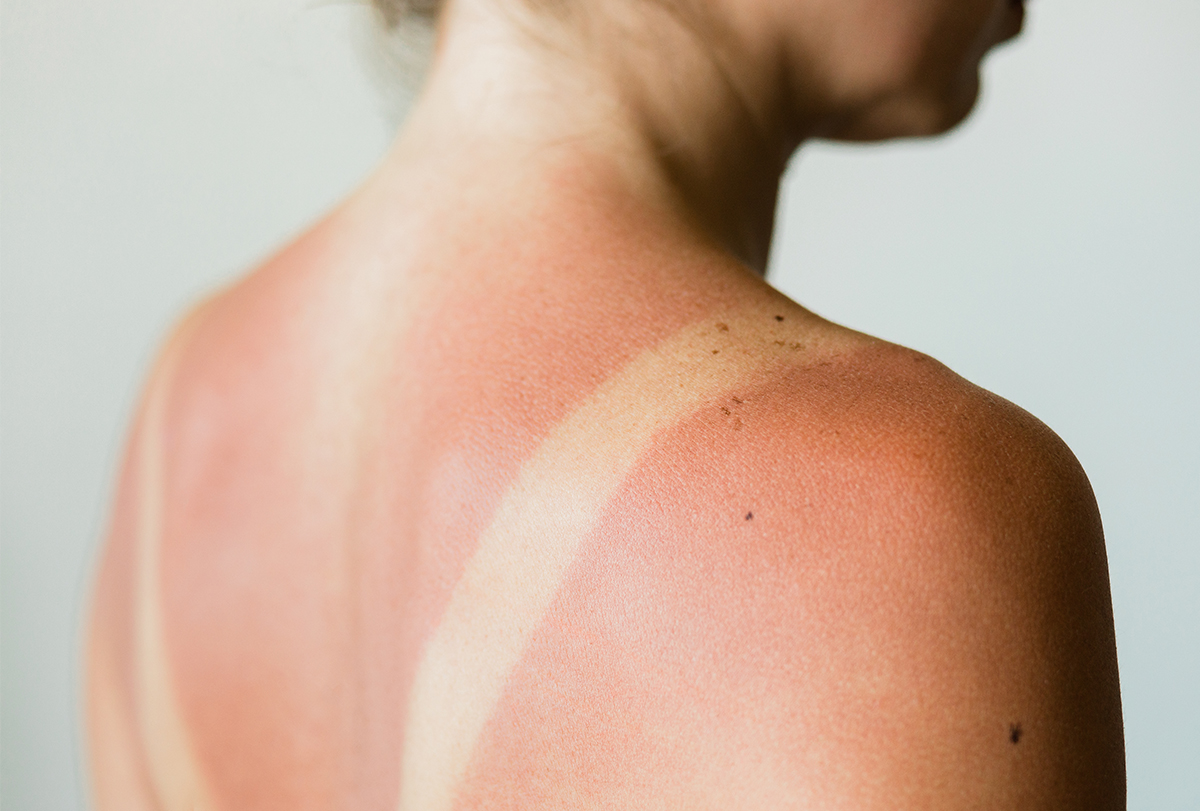
Only about one-third of this radiation reaches the earth, but it is substantial enough to cause tanning, skin burns, and other forms of sun damage. Other artificial sources of UV radiation include tanning beds and solariums.
How Common Is Sunburn?
The National Health Interview Survey conducted a large-scale study in 2015 that included a representative cross-section of 31,162 American adults, of which 34% reported having at least one sunburn that year. (1)
More than 33,000 sunburns reportedly require emergency room visits every year. (2)
Sunburn and Cell Damage
Certain cells in the skin called melanocytes produce a pigment called melanin, which determines skin tone. The more the melanin, the darker the skin. But melanin serves another key function of protecting your skin from UV radiation.
When the UV rays fall on the skin, the melanocytes are stimulated to produce more melanin to protect the skin cells, which leads to tanning. However, fair-skinned people who run low on melanocytes may get a sunburn instead of a tan.
Genes also play a role in determining the melanin content of your skin.
UV radiation can start damaging the skin within 30 minutes of exposure and sooner in people with sensitive or light skin. Skin cells undergo adverse physical and chemical changes when exposed to UV rays, which give rise to an inflammatory response.
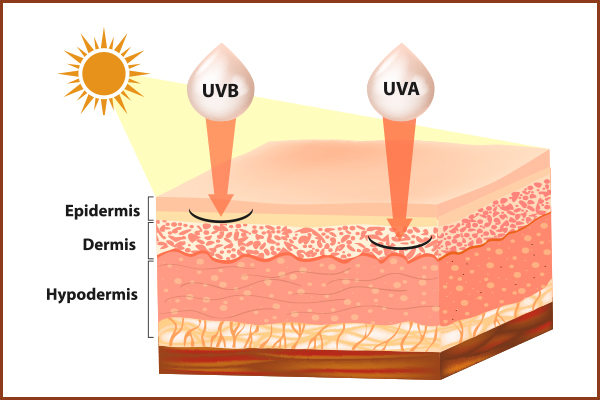
There are two types of UV rays present in sunlight that reach the earth: ultraviolet A (UVA) and ultraviolet B (UVB). UVA rays account for 95% of all the UV radiation of the sun, while the remaining 5% are UVB rays.
Both these rays induce skin damage but in different ways. UVA rays have a longer wavelength, which means they penetrate deeper into the skin than UVB rays, whose effects are limited to the epidermis. However, UVB rays are more biologically active and have greater energy than UVA rays, making them strong enough to burn the skin.
Thus, sunburns are mostly attributed to UVB exposure, whereas UVA radiation is associated with tanning and skin aging. Both these forms of radiation can, however, contribute to the development of skin cancer. UVB rays tend to cause direct destruction of the surface level skin cells, but UVA rays are known to induce chemical changes to the cell’s DNA in the deeper layers. (3)
Overexposure to UVB rays also triggers the production of a chemical compound that activates pain receptors in the skin, making the overexposed skin hurt or sting.
The skin is essentially self-healing as it keeps regenerating itself to get rid of the dead and damaged skin cells and produce healthy new ones in their place. This cell turnover takes place daily, but it will take some time to repair the excessive skin damage caused by a sunburn.
Moreover, the severely damaged cells tend to self-destruct, which causes oxidative stress, which leads to local inflammation including the release of histamines and increase in eicosanoids. (4) The symptoms of this inflammation include dilation of blood vessels, edema, and red, sometimes painful skin.
Symptoms of Sunburn
You may not be able to see or feel a sunburn for a few hours after it occurs, and it can take more than a day or two to manifest completely.
Here are some of the most frequently reported symptoms of sunburn:
- Erythema or increased redness of the skin
- Swollen skin that is warm or tender to touch
- Pain and burning sensation, which may begin a few hours after exposure and progressively worsen over the next 2 days
- Skin peeling, which can occur between 3 and 8 days after exposure
- Headaches
- Painful or itchy fluid-containing blisters that eventually break open
- Severe reactions (sometimes called sun poisoning), including fever, chills, nausea, or rash
- Red, dry, and painful eyes that feel gritty (5)
- Sunburned scalp
Medical Treatment for Sunburn

Most sunburns are mild enough to heal on their own without any serious medical treatment, but the following measures can help speed up the process:
1. Manage pain
Take standard analgesics such as aspirin, acetaminophen, or ibuprofen to relieve the pain, headache, and fever, but in proper dosage and only when you really require it.
Caution: There is substantial evidence that children below the age of 16 can develop a deadly condition called Reye’s syndrome after taking aspirin during a viral illness such as chicken pox and flu. Due to this fatal risk, always consult a doctor before giving aspirin to young children and teenagers.
2. Hydrate the skin
Regularly moisturize your sunburnt skin with hydrating lotions, creams, and ointments that contain ingredients such as aloe vera. You can get these products over the counter, but you can ask your doctor to recommend the best option for you.
Always be very gentle when applying these products to prevent further skin damage. If the skin is severely burnt, tender, or blistered, use spray-on solutions rather than creams. Use light water-based or gel-based moisturizers that absorb readily into the skin.
Caution: Don’t apply heavy petroleum or oil-based products as they trap heat and further exacerbate the sunburn. Also, avoid skin products with “-caine” in their name, such as benzocaine, which are known to cause skin irritation and allergic skin reactions.
3. Curb inflammation
You can use (0.5%–1%) hydrocortisone cream to curb the swelling, ease the burning sensation, and accelerate the healing process.
Such low-dose topical steroids are available without a prescription but can trigger long-term side effects after prolonged or excessive use. Thus, it is always a good idea to consult your doctor before starting steroids to know about their proper dosage and usage.
4. Relieve the itch
Your doctor may prescribe oral antihistamines if you are experiencing unbearable itching or have itchy blisters that can rupture on scratching.
5. Disinfect the skin
It is completely normal for the sunburnt skin to start peeling after a while, which is your body’s way of healing itself. The skin is constantly regenerating itself, but the process occurs over a period. The damaged skin is shed from the surface to gradually reveal fresh new layers formed underneath.
However, you should apply an antiseptic cream on the patches of new skin during the peeling phase to protect it from infection.
Identifying the Degree of Sunburn
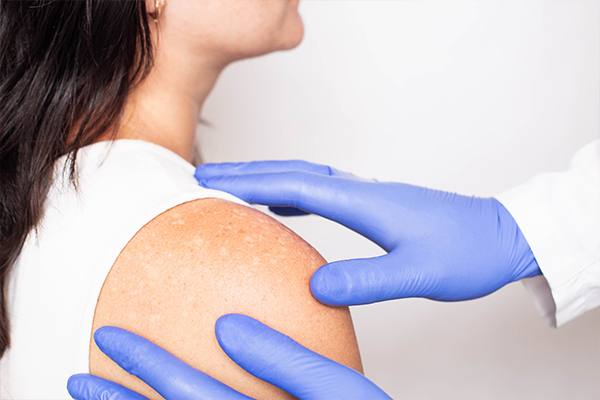
The treatment for sunburn depends upon its severity. Thus, the doctor will first analyze your skin to determine the extent of damage and then recommend the appropriate treatment.
The diagnostic process typically begins with a review of the patient’s medical history and an inquiry about the symptoms and other relevant factors, followed by a physical exam to understand the degree of burns.
The doctor will then classify the sunburn as one of the following and prescribe the treatment accordingly:
- Mild sunburns are characterized by red and tender skin that gets better with simple home care within 3–5 days.
- Moderate sunburns cause deeper skin damage, which usually takes around 7 days to heal completely, sometimes with minimal medication.
- Severe sunburns damage the skin so badly that it may turn extremely red and develop painful blisters, which will take up to 2 weeks of proper treatment to go away completely.
The doctor may also conduct photo tests to determine the patient’s skin phototype based on the Fitzpatrick classification. (6) This test is especially recommended if the patient has a preexisting skin condition that is aggravated by sun exposure. Each phototype responds differently to UV damage and has its own associated risks. (6)
The Fitzpatrick skin phototypes are as follows:
- Type I: Pale white skin that does not tan at all but burns easily when exposed to UV radiation
- Type II: White skin that does not tan easily but burns readily when exposed to UV radiation
- Type III: White skin that quickly becomes tanned and may even burn when exposed to UV radiation
- Type IV: Light-brown/olive skin that tans easily but rarely burns when exposed to UV radiation
- Type V: Brown skin that generally doesn’t burn but tans quickly when exposed to UV radiation
- Type VI: Black skin that becomes even darker when exposed to UV radiation but is highly unlikely to burn
Risk Factors for Sunburn
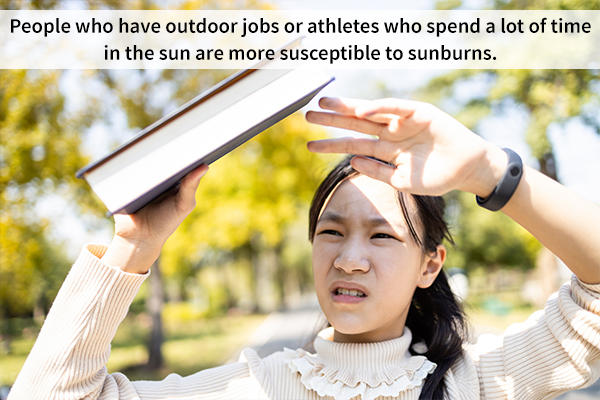
The following factors not only make you more prone to sunburns but also contribute to the severity of skin damage (7):
1. Duration of exposure to the sun’s UV rays
People who have outdoor jobs or athletes who spend a lot of time in the sun are more susceptible to sunburns.
2. Intensity of the sun’s UV radiation
The time of the day, weather, and geographic location are the three main factors that determine the UV index, or the strength of the UV radiation. The sun is at its peak between 10 am and 4 pm, (8) which is when it can cause the most damage.
Winters are characterized by overcast weather and shorter days, which inadvertently reduce sun exposure, whereas summers have long, bright sunny days.
Cloudy days mean lesser sun exposure, thus reducing the possibility of a sunburn. But most of the UV rays can still penetrate through a thick cloud cover and damage your skin, so it’s pertinent to wear sunscreen even when it’s not sunny outside. Moreover, people who live in high altitude areas are closer to the sun and are more vulnerable to sunburns.
3. Skin type and color
People of all skin types and color can get a sunburn, but fair-skinned people are most affected by it. This is because their skin lacks melanin, which is responsible for warding off UV rays.
4. Medications
Regular use of certain medications such as tetracyclines (especially doxycycline), nonsteroidal anti-inflammatory drugs, and retinoids can make your skin increasingly sensitive to sunlight (photosensitivity), thus increasing the risk of sunburn. (9)
5. Age
People of all ages can get a sunburn, but toddlers, young children, and the elderly tend to have extrasensitive skin, which can get easily sunburnt.
6. Ozone
The extent of ozone depletion also determines how fast and severely the UV rays will burn your skin.
7. Medical conditions
Some medical conditions, such as lupus, are associated with increased photosensitivity. The patient’s skin becomes increasingly sensitive to sun damage.
8. Lifestyle
People who go for frequent tanning are more likely to get sunburnt. Those who are overweight (10) or engage in binge drinking (11) are more prone to sunburns.
Complications Associated With Untreated Sunburn
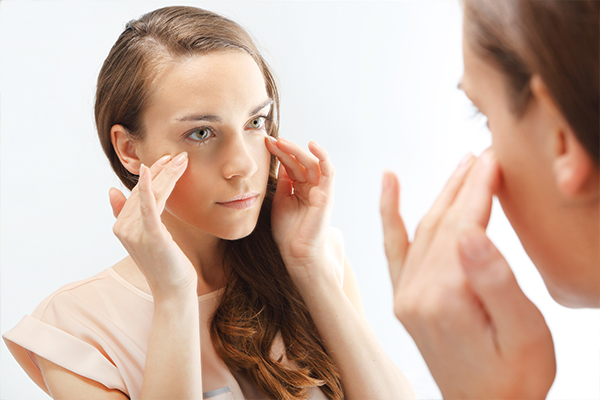
The following complications are associated with untreated sunburn:
- Photoaging occurs, which means that the skin will develop age spots, wrinkles, and fine lines, making you look older than you are.
- The UV rays are known to damage a particular gene involved in tumor suppression. Due to this change in the skin’s DNA, the skin cells damaged by the UV rays may not heal and turn cancerous instead. The most common forms of skin cancer associated with sun exposure are melanoma and squamous cell carcinoma. (12) The more sunburns you get during adulthood, the greater will be your cancer risk.
- Even a single episode of severe sunburn during childhood or adolescence can double your risk of developing skin cancer in the future.
- The skin may incur first- and second-degree burns, which can get infected if not treated properly.
- Long-term exposure to the sun’s UV rays is associated with significant eye damage in the form of pterygium (abnormal tissue growth over the cornea), cataracts, and even macular degeneration, all of which can impair your vision partially or completely if left untreated.
- Hell’s itch is a stingy, relentless, uncontrollable itch that feels like ants are biting your sunburnt skin from the inside. Scratching this itch can trigger extreme pain and further rupture the damaged skin tissue. This kind of itch usually sets in a few days after the sunburn occurs.
When to See a Doctor
Mild sunburns tend to heal on their own with simple skin care at home, but you may want to seek medical assistance if you experience any of the following symptoms along with the red, tender skin:
- Fever
- Shock
- Severe itching
- Heat exhaustion
- Dehydration
- Dizziness
- Sunken eyes or eyes being sensitive to light
- Rapid breathing
- Feeling very thirsty
- Nausea
- Rash
- Painful blisters
Final Word
Sunburns can range from mild to severe, but most cases involve damage to the outermost layer of the skin (epidermis) characterized by red and painful skin. This kind of superficial sunburn can usually be healed at home.
However, repeated sunburns can give rise to permanent dark spots, premature skin aging, and deadly skin cancers. Thus, people who are prone to sun exposure must take all the necessary steps to protect their skin from harmful UV radiation.
Excessive or repeated exposure to UV radiation can permanently damage the genetic structure of skin cells, and so it’s best to care now than regret later. Sun protection is a must even on the relatively overcast or foggy days as the UV rays can breach through the thickest of cloud cover.

- Was this article helpful?
- YES, THANKS!NOT REALLY


